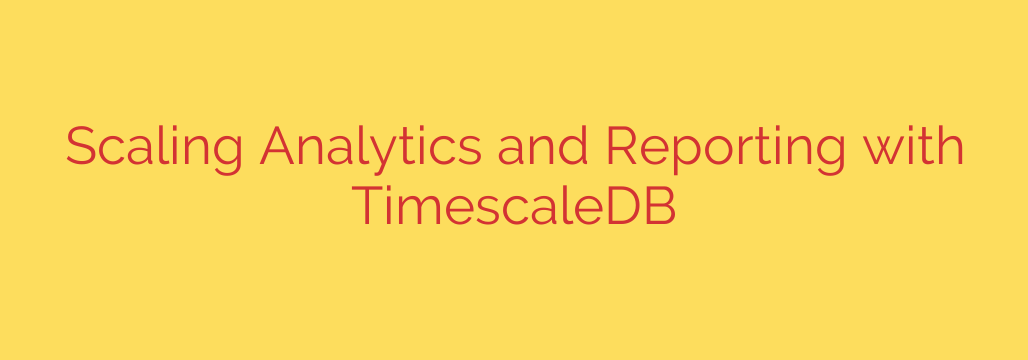
Handling Massive Time-Series Data: Scaling Your Analytics and Reporting
In today’s data-driven world, the volume of information generated by applications, sensors, IoT devices, and monitoring systems is exploding. Much of this data is time-series in nature – sequences of data points indexed by time. While incredibly valuable for understanding trends, performance, and behavior, handling and analyzing this data at scale presents significant challenges for traditional databases. Getting timely, accurate reports and powering responsive analytics dashboards can become a real bottleneck.
The problem often arises when general-purpose databases, not optimized for the unique characteristics of time-series data (like high ingest rates and time-based queries), begin to buckle under the load. Performance degrades, queries slow down, and managing the sheer volume becomes a complex, manual task, often requiring costly sharding or archiving solutions.
Fortunately, specialized database solutions designed specifically for time-series workloads offer a powerful alternative. One such approach leverages the robustness of PostgreSQL while adding dedicated time-series capabilities, enabling efficient scaling of analytics and reporting infrastructure.
By adopting a database optimized for time-series, organizations can overcome these hurdles and unlock the full potential of their data. Here’s how it helps in scaling analytics and reporting:
- Efficient Data Ingestion and Storage: Time-series databases are built to handle high write throughput. They often employ automatic partitioning (like hypertables) based on time, which simplifies data management and significantly speeds up data insertion compared to monolithic tables. This leads to smoother data pipelines even under heavy load.
- Optimized Time-Based Queries: The core strength lies in query performance for time-based ranges, aggregations, and joins. These databases are specifically indexed and architected to make queries like “average temperature over the last week” or “total requests per minute for this server” incredibly fast, directly leading to faster dashboards and interactive analytics.
- Effective Data Compression: As time-series data grows, storage costs can become substantial. Solutions optimized for time-series often include built-in, high-ratio data compression, reducing storage footprints while often improving query performance by reading less data from disk.
- Simplified Scalability: Managing scaling manually across massive time-series datasets in traditional databases is complex. Specialized databases provide features like automatic chunking and distribution, making it easier to scale horizontally as data volumes increase without needing extensive application-level changes.
- Leveraging Familiarity and Ecosystem: Building on established database technology, like PostgreSQL, means developers and data professionals can leverage existing SQL knowledge, tools, and the vast PostgreSQL ecosystem, simplifying adoption and integration while ensuring enterprise-grade reliability.
For analytics and reporting teams, these technical advantages translate directly into business benefits. Reports that previously took hours or even days to generate can complete in minutes or seconds. Real-time dashboards become truly real-time, enabling quicker decision-making. Data scientists can query larger datasets directly without complex ETL processes or sampling.
Choosing the Right Approach for Time-Series Analytics
If your organization deals with growing volumes of time-series data and you’re struggling with the performance or complexity of your current analytics and reporting infrastructure, consider evaluating databases built specifically for this purpose. Look for solutions that offer:
- Proven performance under high ingest and query loads.
- Features like automatic partitioning and data compression.
- Strong SQL support for ease of integration with existing tools.
- Clear pathways for scaling data volume and query concurrency.
Investing in the right data infrastructure is crucial for turning raw time-series data into actionable insights at the speed required by modern business and operations. By choosing a database designed for the challenge, you can ensure your analytics and reporting capabilities scale effectively with your data growth.
Source: https://blog.cloudflare.com/timescaledb-art/








